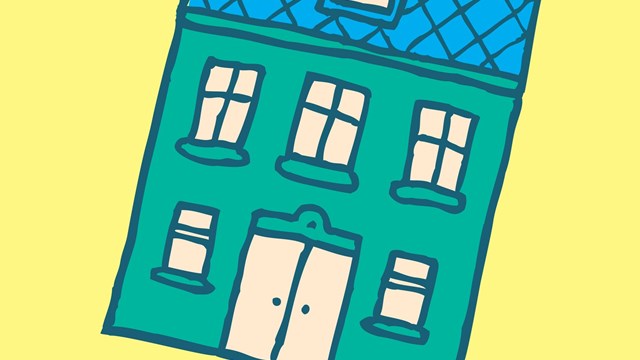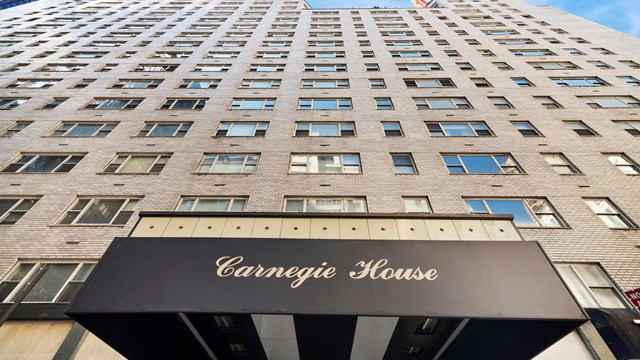Most borrowers opt for fixed rate loans in today's low-interest market, but for those willing to embrace change and play the field a bit, still-cheaper rates are available. There are state-sponsored loans for making your building more energy-efficient, for example. To shave percentage points off a loan for other purposes, there's the so-called London Inter-Bank Offered Rate (LIBOR)-based rate. Or you might consider looking into the new adjustable-then-fixed rates from Fannie Mae.
While Fannie Mae's product is new, LIBOR-loans have been around awhile and are experiencing new popularity, and state-sponsored energy loans are gaining popularity through sheer word-of-mouth.
But are co-op and condo boards embracing these new ways of borrowing? Should they embrace them? Perhaps because of their lack of experience (be it real or perceived), co-op owners are notorious for being fiscally conservative; and with interest rates as low as they've been in recent years, the conservative choice often seems a good one - to both borrowers and many lenders.
"You can get a ten-year loan right now for 6.25 [percent interest]. So why wouldn't you take a fixed-rate deal and know where your money is going to be?" asks Thomas Schissler, vice president of American Property Financing, Inc. in Manhattan. "For my money, whenever anybody asks me, I'm selling people fixed-rate product."
A simple product, at a good rate, is often simpler to agree upon, too. Explains Steven Heller, regional senior vice president of Arcs Commercial Mortgage Co., "Co-ops are slow to make up their minds. It's management by board of directors and finance. There are very few people who pull the trigger with the very first [loan] meeting."
Low rates have encouraged some co-ops to refinance, however.
"With 9/11, we have seen, frankly, income levels on plain-vanilla rentals decrease," says Heller. "We've been aggressive in pursuing underlying co-op debt because they are immune to these income spikes, or income volatility. Even our plain-vanilla products are hot right now for co-ops."
But despite an overall tendency for boards and their advisors to go with known quantities, lenders say that if a board puts the time into learning about a few new products - and is willing to watch its financing - there's money to be saved.
Heller is currently working with a new product from Fannie Mae called Discounted Mortgage Backed Securities (DMBS). According to Heller, a DMBS trades off the organization's own paper, which means that right now the loan rate is about three percent - or about three percent lower than the standard fixed rates now offered by banks. The rate is adjusted every 90 days, and can be converted to a fixed rate at any time during the term of that loan at the then-prevailing rates. If it is then converted to a new Fannie Mae loan, there is no prepayment penalty.
In the short-run, on, say, a $25 million loan, the three-percent rate would save the borrower $750,000 each year, since each percentile interest foregone would be worth $250,000. According to Heller, premier co-ops are the likeliest candidates for both of these products.
Fannie Mae's product isn't new; just changed. DMBSs have long been available for loans of greater than $50 million. This past spring, though, they became available for loans as low as $20 million. Freddie Mac has a similar product called a Reference Rate, which is still only available for loans totaling more than $50 million.
Other changes have been afoot with Fannie Mae as an organization. Kevin Chittenden, vice president at Fleet Mortgage, says that Fannie Mae "has gotten a lot better at doing co-ops." In the past, if a potential borrower didn't match the Fannie Mae formula, they were rejected. Now Fannie Mae is more flexible, and is willing to take a number of things into consideration when reviewing a loan application. Now, he says, "It's more interpretive."
Also getting more user-friendly is New York State's energy conservation program, which grants "NY Energy Smart Loans," available at 4.5 percentiles below current bank rates. In plain English, this means that if the bank lends at seven percent interest, the state-subsidized loans are at 2.5 percent.
NY Energy Smart Loans can be for as long as five years, and for as much as $5 million. The catch is, they must be used to improve a property's energy efficiency, through structural improvements, the installation of energy-saving appliances, or new, more efficient windows, for example. The loans are available through the New York State Energy Research and Development Authority. (You can check out their Web site at www.getenergysmart.org.)
"[Energy loans] have been around for many years, but the organization was clumsy," says Leonard Maisel, senior vice president at Amalgamated Bank. "What the borrower and the lender had to go through was dysfunctional. [Now], it's all changed."
According to Maisel, the state-run program still is getting known primarily through word of mouth. Maisel says he began suggesting it to clients - like New York City property manager Insignia-Douglas Elliman - late last year.
For Insignia, the low interest, state-sponsored loans became the deciding factor in whether or not to move forward with two major building upgrades, says Robert Corso Jr., managing director of Insignia Residential Group.
Insignia recently got its first energy loan - a $300,000 loan to pay for a new, more energy-efficient boiler in one of their buildings - and the company expects a second loan application to be approved in coming weeks. The loan is for half the $1 million it will cost to purchase and install new windows for another building. Both loans are being used for Upper East Side Park Avenue co-ops.
Another new product for Insignia is the LIBOR loan, which is a line of credit with fluctuating interest rates based on the London Inter-Bank Offered Rate. Like the state-sponsored energy loans, LIBOR loans are not a recent invention; they're just enjoying increased visibility because LIBOR rates are at historic lows.
According to Corso, LIBORs - adjusted every 30 days - are at about 189, or less than two percent. Banks charge an index - which is about two percent now - on top of LIBOR. That brings a LIBOR-based loan rate to about four percent; about two percent lower than the going fixed rates, or about four percent lower than a traditional second mortgage.
The lowest LIBORs are adjusted monthly, and those are most popular. Sixty-day and 90-day LIBORs also are available. Often there are no prepayment penalties, as there are for refinancing a mortgage, and it isn't necessary to take out the entire loan amount at once. In other words, what is often called a "loan" is actually more like a line of credit.
"The thing that's so attractive [is that] you may need $500,000 over time, but you pay on whatever you draw down on," says Corso. The debt service is based on whatever you draw down, instead of the entire amount for which the borrower qualified. There's not really a lot of risk," he says. If the rate goes up a great deal, the borrower just pays it off.
But some lenders feel that rising rates is a real risk. They'd rather pay a little more and lock in today's good rates, than take a chance at being stuck with much higher rates later. LIBORs and other variable-interest loans have fallen out of favor with many banks, says Chittenden. "I think banks were probably paying "¦ too good a rate on them [to make them profitable]."
For those lenders and borrowers wed to fixed rates, there are still other alternatives to gambling on the direction interest rates will go next.
For example, Freddie Mac has just come out with a standard ten-year loan that automatically rolls the ten-year yield maintenance prepayment penalty into a one-year adjustable rate - at 250 basis points over Freddie Mac's reference paper rate.
"You still have the yield maintenance," says Heller. "But this saves you at least five basis points over the standard ten-year loan with a 9.5-year yield maintenance prepayment penalty. Any co-op can take advantage of that, so long as they're 70 percent sold and otherwise meet Freddie Mac's guidelines. Freddie Mac generally likes to see co-op loans in excess of $2.5 million."
And - while not new - interest-only loans can be a good option, too. "We've always had interest-only, but it's becoming more widely used, especially among well-heeled co-ops," says Heller. "Good co-ops don't want amortization because it only provides their shareholders with phantom income. [Interest-only] enables them to have a very stable maintenance. Most co-ops do not want to increase maintenance charges. So while other expenses might be going up - especially real estate taxes and insurance - by having interest only, this enables them to stabilize that portion of their expenses."
However, says Heller, if a co-op has a lot of debt, and thus higher maintenance charges than those of competing co-ops, an interest-only loan might not necessarily be the best option. In that case, it might be better to amortize down the debt so that eventually, it could be competitive.
The bottom line is that whatever your building's particular needs, there are more than just one or two loan options available for your consideration. You'll need to do some research and enlist the help of a competent advisor to help you navigate both the old standby lending formats and the Johnny-come-latelys and find the best fit for your community.







Leave a Comment